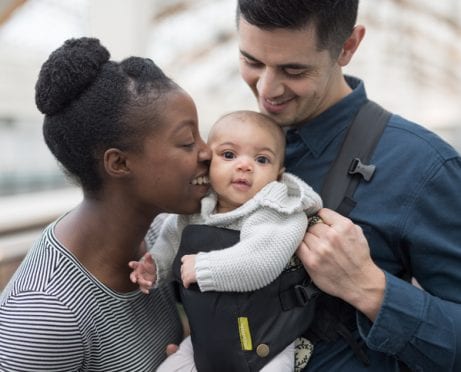
You finally saved enough for a down payment and you’re ready to start buying a house. I hate to be the one to tell you, but you may not be as financially ready as you think.
Here’s my cautionary tale from the first house I ever bought: a $79,000, two-bedroom, one-and-a-half bathroom townhouse just a few blocks from the beach.
The purchase price of $79,000 snowballed into much more.
Simplify Your Investing Strategies
Homeowner’s Insurance and Property Taxes
Seasoned homeowners know that you’ll have to pay for homeowner's insurance and property taxes. However, first-time buyers may not realize how quickly these add up.
“Homeowner’s insurance is a product that pays for damages to your home and/or personal possessions in the event of a covered loss (fire, hurricane, tornado, hail storm, theft, etc),” explains real estate and insurance agent John S. Williams.
“Homeowner’s insurance will also pay for certain things that you are deemed legally liable for (such as someone getting hurt on your property),” Williams adds.
The average homeowner’s insurance premium costs about $1,211 a year according to the National Association of Insurance Commissioners. If you have taken out a mortgage for your home, your bank will likely require you to have homeowner’s insurance.
Property taxes are generally calculated using a percentage of the assessed value of the home. In some places, the average property taxes are only 1 percent or less of the home’s actual value. But the average can be as high as 2.21 percent, according to the Tax Foundation.
Our property taxes were reasonable, coming in at $475 per year. However, my wife and I could not believe the cost to insure our humble first home. Our townhouse was close to the beach in Florida, so we could obtain hurricane insurance only through a state-backed agency. That made our insurance expensive: $1,912 per year. Ouch.
Closing Costs
When you close on your home, you’ll likely need to pay thousands of dollars in addition to your down payment for closing costs. You may encounter costs such as origination fees for your loan, tax stamps, transfer taxes, and certification and recording fees. You normally repay the seller for any taxes they paid that apply after closing.
You can anticipate these costs, as truth in lending laws require disclosure of all closing costs. The closing costs can range for a variety of reasons. For us, closing costs added an additional $3,200 to our home purchase.
Real estate agent Anthony Szol adds that the size of the house, the type (single family, condo, townhouse), and its features (pool and spa) may be factored in when ordering a home inspection or appraisal.
“Some ways to negotiate are to shop lenders and ask about their fees,” Szol says. “Also, some lenders allow you to finance the closing cost into the loan. I do not recommend this as you have to pay interest on it, but it is an option to pay less up front.
“Another option is asking the seller to pay your closing costs in your offer,” Szol adds. “This is less common in the current market due to sellers receiving multiple offers. Additionally, some states have programs or grants for first-time homebuyers to help with closing costs.”
You are not alone in the process of becoming a new homeowner. Here are some examples of unexpected costs that other new homeowners ran into. “Perhaps the largest unexpected costs we found included increased recurring costs,” recounts Brendan Hurley, who moved into his home in November 2020. “We went from paying an average of $50 per month to $200 per month (around four times as much) for electricity, gas, and water. Owning a car (where we previously didn’t need one) added another $400 a month. Car and home insurance plus property taxes added another $300 per month.” Another new homeowner, Mason Miranda, explains: “Our first unexpected cost within a week of moving in was our main water shutoff valve. To fix it, we had to hire a plumber, which cost $500. To offset the expense, we put the entire transaction on a zero percent APR credit card, and it allowed us to pay that money over the course of a couple months, interest free.”
Moving Costs
After you’ve closed on your home, it’s time to move there. Unfortunately, moving isn’t free. Most people need to hire movers or rent a U-Haul or Penske truck. Then, they pack up their belongings, and move them into their new home.
Personally, my wife and I have always gone the cheapest route. We pack our own items, rent a truck, load the truck with the help of our friends and family, and then unload everything into our new home.
If you enlist the help of others, be sure to thank them with some pizza and beer (at least).
Moving was a relatively low-cost item for us, as we were going just an hour away. Still, it set us back an additional $235.
Renovation Costs
Even if you found the perfect home, there will come a time when you want to renovate — it’s just part of home ownership. My wife and I normally buy homes that need a little bit of work, mainly cosmetic. This allows us to get a better deal. That means we budget more for renovations when we are buying a home.
For instance, after moving into our townhouse, we:
- Replaced every light fixture and ceiling fan
- Replaced old toilets with high-efficiency models
- Replaced old slab doors with updated six-panel doors
- Replaced the mismatched door hardware with matching brushed nickel hardware
- Repaired some rotting wood on our storage shed.
If you’re considering making changes to your new home, be sure to factor those changes into your budget. Renovation supplies and labor cost us $1,014.
Maintenance Costs
Finally, when you move into a home, it doesn’t magically take care of itself. If you’re used to renting, the landlord likely fixed most issues. Buying a house means that you are the landlord.
You’ll need to maintain your new yard. This may mean buying a trimmer or other tools, which cost us $63. Sadly, our lawn was dead when we moved in during the heat of the Florida summer, and it cost us $326 to lay sod ourselves. Other miscellaneous landscaping set us back an additional $67.
Basically, if something breaks, you’ll need to fix it, pay someone else to fix it, pay to replace it, or do without it.
We had two appliances that needed to be updated when we moved in. We replaced the dryer and the microwave at a cost of $685.
These things add up over time, so make sure you add a line item to your monthly budget for maintenance. If you don’t use the money one month, make sure to save it. You never know when your air conditioner will go and you’ll need a $3,000 replacement. Buying a house requires longer term investment than renting.
Home ownership can be an awesome accomplishment. Just make sure you’re buying a home with your eyes wide open. In the first year after we bought our townhouse, we paid an additional $7,977 in home-related costs. That’s more than 10 percent of the purchase price of our home!
However, it’s important to note that you can anticipate many of these costs beforehand and plan for them, or even spread them out over the first few years if they are not immediately necessary. Evaluate what can wait versus what needs to be done yesterday, and budget accordingly.
Though our example may be extreme, sometimes the additional costs make home ownership seem less attractive than just paying the rent every month.
The Bottom Line
Buying a new house is a big step — and a big expense. Though the unexpected additional costs throughout the purchasing and moving process of homeownership can be overwhelming at times, having a ballpark idea of what these costs will be can make the situation a lot less daunting.







![[INFOGRAPHIC] Real Estate Trends for 2021](https://centsai.com/wp-content/uploads/2021/04/INFOGRAPHIC-Real-Estate-Trends-for-2021-461x372.jpg)


![[INFOGRAPHIC] Top Real Estate Markets During COVID-19](https://centsai.com/wp-content/uploads/2021/01/Infographic-Top-Real-Estate-Markets-During-COVID-19-461x372.jpg)